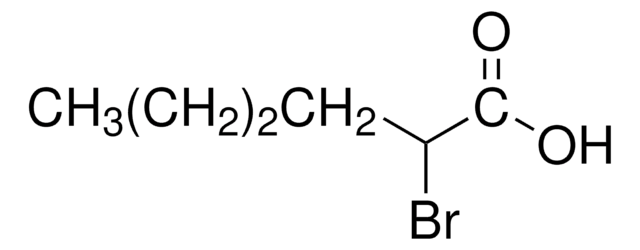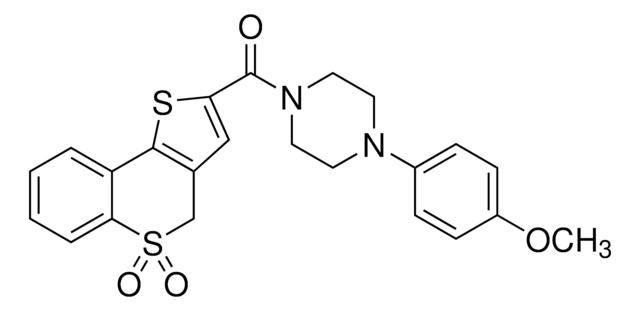There is no indication that this product is light sensitive in solution. It is recommended that solutions be stored in aliquots at - 20 deg C for up to 1 month. Keep containers tightly sealed. Avoid repeated freeze/thaw cycles.
238422
2-Bromohexadecanoic acid
~97%
Sinónimos:
2-Bromopalmitic acid
About This Item
Productos recomendados
Ensayo
~97%
Formulario
solid
cadena SMILES
CCCCCCCCCCCCCCC(Br)C(O)=O
InChI
1S/C16H31BrO2/c1-2-3-4-5-6-7-8-9-10-11-12-13-14-15(17)16(18)19/h15H,2-14H2,1H3,(H,18,19)
Clave InChI
DPRAYRYQQAXQPE-UHFFFAOYSA-N
Información sobre el gen
human ... PPARD(5467)
¿Está buscando productos similares? Visita Guía de comparación de productos
Descripción general
Código de clase de almacenamiento
11 - Combustible Solids
Clase de riesgo para el agua (WGK)
WGK 3
Punto de inflamabilidad (°F)
235.4 °F - closed cup
Punto de inflamabilidad (°C)
113 °C - closed cup
Equipo de protección personal
dust mask type N95 (US), Eyeshields, Gloves
Elija entre una de las versiones más recientes:
¿Ya tiene este producto?
Encuentre la documentación para los productos que ha comprado recientemente en la Biblioteca de documentos.
Los clientes también vieron
-
Does the solution need to be stored away from light?
1 answer-
Helpful?
-
Active Filters
Nuestro equipo de científicos tiene experiencia en todas las áreas de investigación: Ciencias de la vida, Ciencia de los materiales, Síntesis química, Cromatografía, Analítica y muchas otras.
Póngase en contacto con el Servicio técnico











